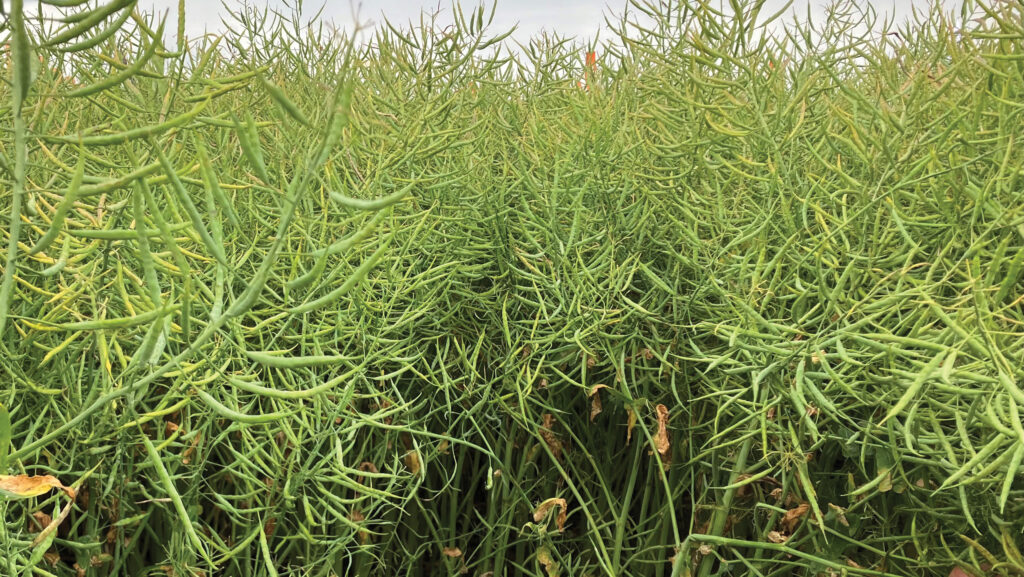Cereals 2024: Why September drilled OSR can boost yield
 © MAG/Emma Gillbard
© MAG/Emma Gillbard Drilling oilseed rape from the second week of September rather than the typical August sowing window could be a strategic move for growers to boost yield potential.
Latest research from crop breeder NPZ (formerly LSPB) reveals how September drilling can lead to a stronger, more uniform canopy with greater pod set and branching, with yields up to 1.5t/ha higher.
Stronger, more uniform canopies also reduces the need for plant growth regulators.
See also: Cereals 2024: After 80 years, where next for Recommended List?
Prof Ute Kropf of the University of Applied Sciences in Kiel, Germany who has been working with the plant breeder, explained that delayed drilling can alter crop physiology to promote yield as oilseed rape sets yield early in its development.
“Establishing crops in September can also reduce pest pressure by avoiding the main adult cabbage stem flea beetle migration period in August.
It can reduce disease risk – particularly verticillium wilt and light leaf spot. which is a real benefit to growers,” she said.
How does late drilling impact crop physiology?
Oilseed rape uses energy reserves over winter to develop buds and set yield during the bud differentiation period.
Once stem elongation begins, nutrients and energy reserves are remobilised from weaker side tillers to the main stem, in what is known as the reduction phase.
Michael Shuldham, sales manager at NPZ, noted that because oilseed rape yield is set early in the plant’s development, increasing the length of the bud differentiation period will promote yield.
“Plant growth follows thermal time which is why pre-winter oilseed rape plants have a requirement of thermal units to reach the required growth stage,” he said.
“As the crop develops, a thermal temperature of 150C days is needed for each pair of leaves to establish.
So, to get to the six-leaf stage requires about 600C of thermal heat. At six leaves, plants enter bud differentiation, which continues up to the 12-leaf stage.”
At 1,100-1,200C, the plant reaches maximum bud density and stem elongation starts. At this stage, the reduction phase begins and nutrients and energy from weaker side tillers relocate into the stem.
Later drilling can maximise the length of the bud differentiation period to set as much yield as possible and delay the onset of stem extension.
This will promote yield potential and reduce the number of buds and tillers lost during stem extension.
“Too shorter bud differentiation or too advanced crop canopies associated with earlier drilling will restrict the plant from reaching its yield potential,” said Michael.

Michael Shuldham © MAG/Emma Gillbard
Manage risk
Milder winters can exacerbate the problem of having too much accumulated temperature before the winter, which gives another reason to move towards later drilling.
“We are not advising all growers to suddenly change their drilling dates, but it can be a useful tool to manage risk by establishing a proportion of oilseed rape later in the season.
“Farmers can also use their own on-farm weather station data to start looking at thermal time and work out sowing dates suited to their individual farm conditions,” concluded Michael.
Drilling
18 August
- September Two true leaves (300C)
- October-November Bud and root differentiation (800-1,200C)
- December-March Stem elongation/reduction phase
- April-May Flowering
- May-June Pod development
- July Harvest
11 September
- October Two true leaves (300C)
- November-March Bud and root differentiation (800-1,200C)
- March-May Stem elongation/reduction phase
- May Flowering
- June to early July Pod development
- July Harvest
